I came across this great and interesting article on Bored Panda a few weeks ago that got me really intrigued. It was about feral children. The article was accompanied by these incredible photos from the UK based German photographer Julia Fullerton - Batten.
The article is about some famous and some more recent cases of feral children. The definition of a feral, or "wild child", is one who, from a very young age, has lived in isolation from human contact, unaware of human social behaviour and unexposed to language. It is sometimes referred to as the ‘Mowgli syndrome’, a term often given to children who are deemed ‘feral’. It originates from the character in Rudyard Kipling’s fictional story, The Jungle Book even though it is not recognised as a psychological or physiological disorder. Some of the kids got lost, some ran away and others were straight up neglected. The reality is that feral children often face cognitive and behavioural disabilities, occasionally their stories can also be a testament to the human will to survive, and of the tender maternal instinct of other animals.
It's kind of like the Legend of Romulus and Remus, the twin founders of Rome. They were abandoned as children and had to be nursed by a wolf until they were discovered by a wandering shepherd. Eventually, they founded the great city on Palatine Hill, the very place where they had been cared for by the wolf. Despite this being a myth of how Rome came to be the history abounds with real stories of children who really were raised by animals. The cases I read about are very interesting and I thought it would be interesting to share this with you. I used only the photos from Julias series but if you follow the links from my post you will find real photos and videos of the actual Mowglies. I would add a story about an Bosnian Wild Boy which I also came across during my research for this post. I must note that some numbers defer depending on the source, like ages of the children or years when they were found and in one case even the name of the child (the Bird boy Vanya is some places named Prava).
The Lobo Wolf Girl of Devil's River
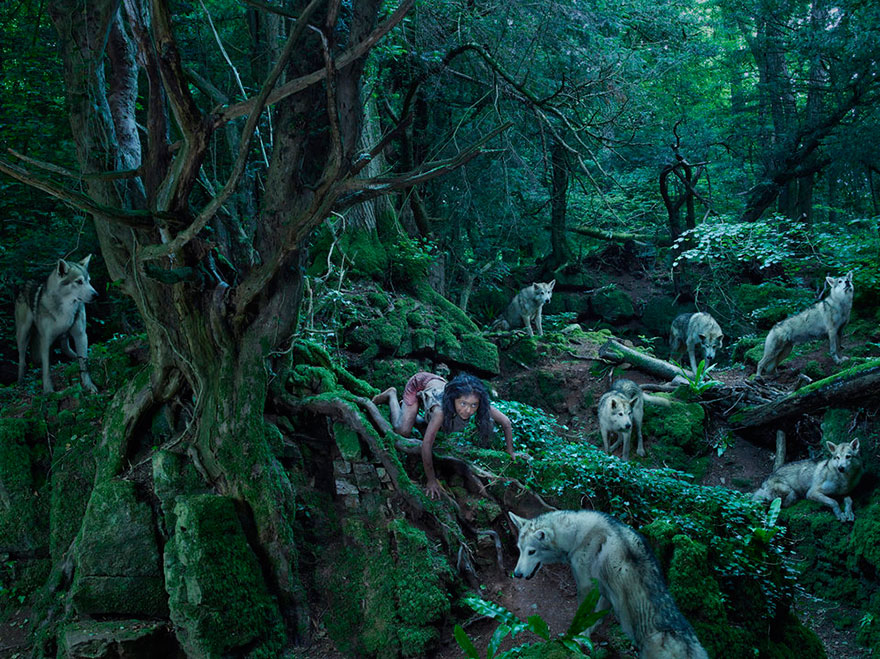
This is a case from mid 19th century Mexico. In 1845 a girl was seen running on all fours with a pack of wolves hunting goats near San Felipe, Mexico. A year later she was seen with the wolves eating a goat. She was captured by villagers a while later. Supposedly she howled incessantly throughout the night, attracting a pack of wolves that charged into the village in an apparent rescue attempt. She was able to speak out of her enclosure and escape.
The girl was not seen again until 1852 when she has reportedly witnessed suckling two wolf cubs on a sandbar in a river. After being seen, she gathered up the two cubs, ran back into the woods and was never heard from again.
Oxana Malaya, the Dog Girl
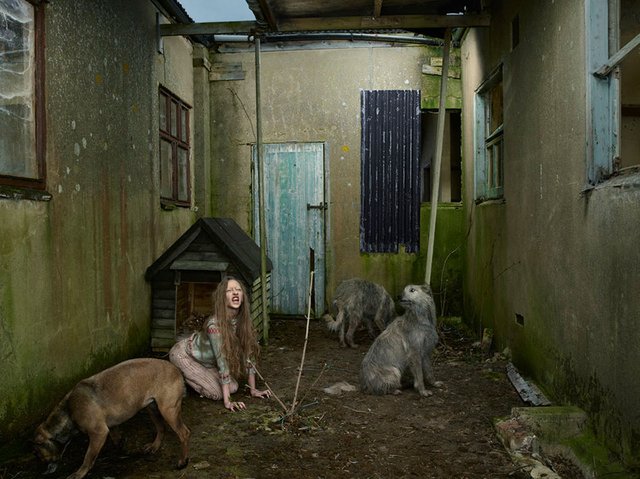
Oxana was found in Ukrainian village of Novaya Blagoveschenka, living with dogs in a kennel in 1991. She was eight years old and had lived with the dogs for six years. Her parents were alcoholics and abusive. In one documentary, through an interpreter, Oxana tells the reporter that her mother and father "completely forgot about me". They argued and shouted. Her mother would hit her and she would pee herself in terror. So one night, they had left her outside. Looking for warmth, the three-year-old crawled into the farm kennel and curled up with the mongrel dogs, an act that probably saved her life. When discovered she behaved more like a dog than a human child. She ran on all fours, panted with her tongue out, bared her teeth and barked. Because of her lack of human interaction, she only knew the words “yes” and “no.”
Intensive therapy aided Oxana to learn basic social and verbal skills, After a series of cognitive tests, Fry concluded that Oxana has the mental capacity of a six-year-old and a dangerously low boredom threshold. She can count but not add up. She cannot read or spell her name correctly. She has learning difficulties, but she is not autistic, as children brought up by animals are sometimes assumed to be. Now 30 years old, she lives in a clinic in Odessa and she has found some peace caring for cows that reside on a farm near the mental institution where she lives.
Shamdeo the Indian Wolf Boy
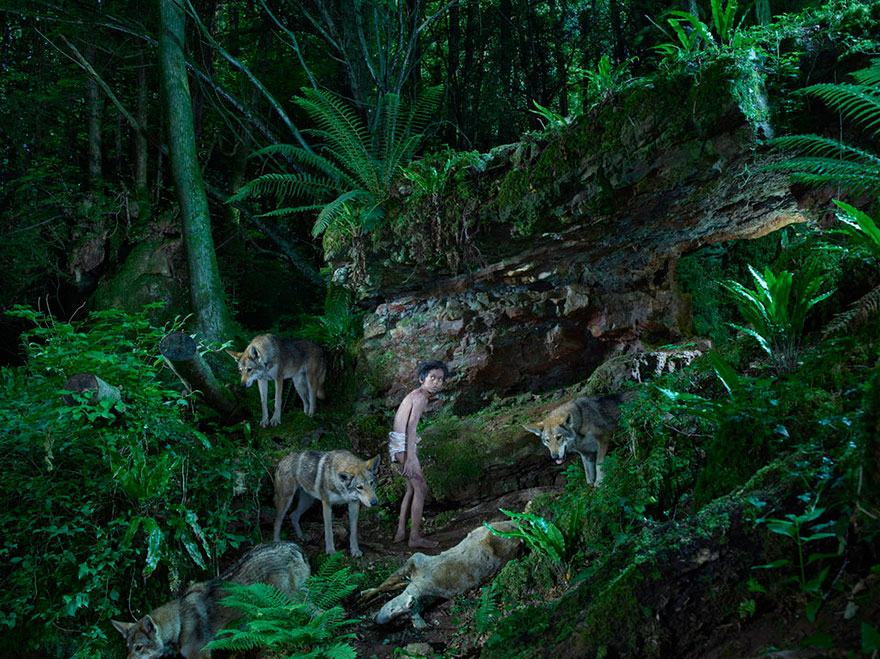
Shamdeo, a boy aged about four years old, was discovered in a forest in India in 1972. He was playing with wolf cubs. His skin was very dark, and he had sharpened teeth, long hooked fingernails, matted hair and calluses on his palms, elbows and knees. He was fond of chicken-hunting, would eat earth and had a craving for blood. He bonded with dogs.
He was finally weaned off eating raw meat, never talked, but learnt some sign language, how to dress him self and eat properly. In 1978 he was admitted to Mother Theresa’s Home for the Destitute and Dying in Lucknow, where he was re-named to Pascal. He died in February 1985.
Vanya Yudin the Bird Boy
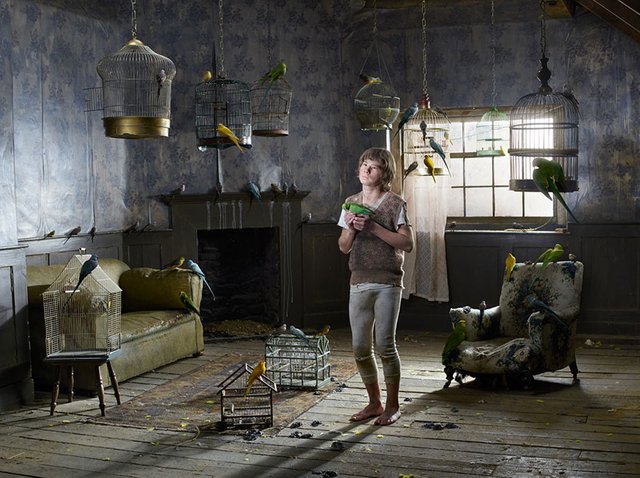
Vanya was found in a tiny, two-bedroom apartment at the age of seven, living with his 31-year old mother. He was confined in a room filled with bird cages,living with his mother’s pet birds, bird food and droppings. She treated her son as another pet. He was never physically harmed, she neither beat him nor left him without food, but she never spoke to him. His only communication was with the birds. He could not speak, but he chirped. When he wasn’t understood he would wave his arms and hands in a bird-like manner.
Vanya was moved to a centre for psychological care where doctors are trying to rehabilitate him. I could not find any new information on how he is doing.
Marina Chapman the Girl With No Name
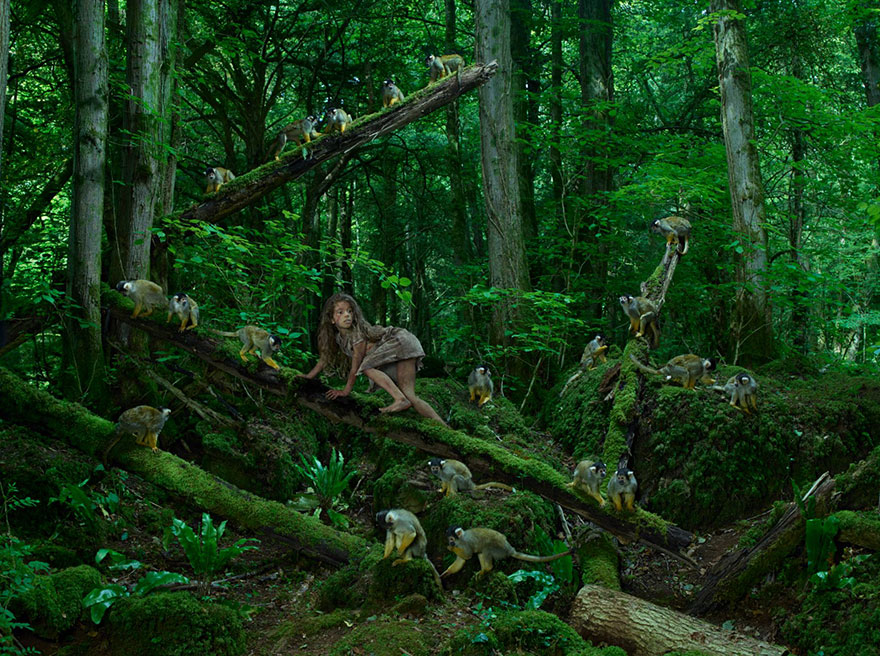
Marina was, as is her own account, kidnapped in 1954. at 5 years of age from a remote Colombian village and later left by her kidnappers in the jungle. She supposedly lived with a family of small, capuchin monkeys for five years before she was discovered by hunters. She ate berries, roots and bananas dropped by the monkeys; slept in holes in trees and walked on all fours. She was befriended by the young monkeys and learned their monkey ways: h to climb trees and what was safe to eat, how to play and groom.
Marina had lost her language completely by the time she was rescued by hunters. She was sold by the hunters into a brothel, escaped and lived in the streets for some time. She was then enslaved by a family, before being saved by a neighbour, who sent her to Bogotá to live with her daughter and son-in-law. They adopted Marina alongside their five natural children and help her to be rehabilitated and relearn social skills. When Marina reached her teens, she was offered a job as a housekeeper and nanny by another family member. The family with Marina moved to Bradford, Yorkshire in the UK in 1977, where she still lives today. She married and had children. Marina and her younger daughter, Vanessa James, co-authored a book about her feral experiences, and those afterwards ''The Girl With No Name''.
Madina the Girl Raised By Dogs
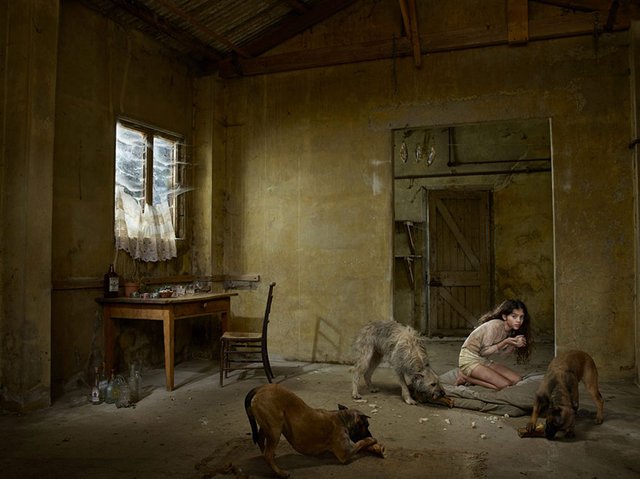
Madina lived with dogs from birth until she was 3 years old, sharing their food, playing with them, and sleeping with them when it was cold in winter. She was totally neglected by her family and when social workers found her in 2009, she was naked, walking on all fours and growling like a dog.
Madina’s father had left soon after her birth. Her mother, 23 years old, started drinking heavily. She was frequently too drunk to look after for her child and often disappeared. She would frequently invite local alcoholics to visit the house. Her alcoholic mother would sit at the table to eat while her daughter gnawed bones on the floor with the dogs. Madina would run away to a local playground when her mother got angry, but the other children wouldn’t play with her as she could hardly speak and would fight with everyone so dogs stayed her best and only friends.
Doctors reported that the Madina is mentally and physically healthy despite her ordeal. There is a good chance that she will have a normal life once she has learned to speak more in line with a child of her age. I found this article from the time of Medina's discovery about the case.
Genie the Forgotten Girl
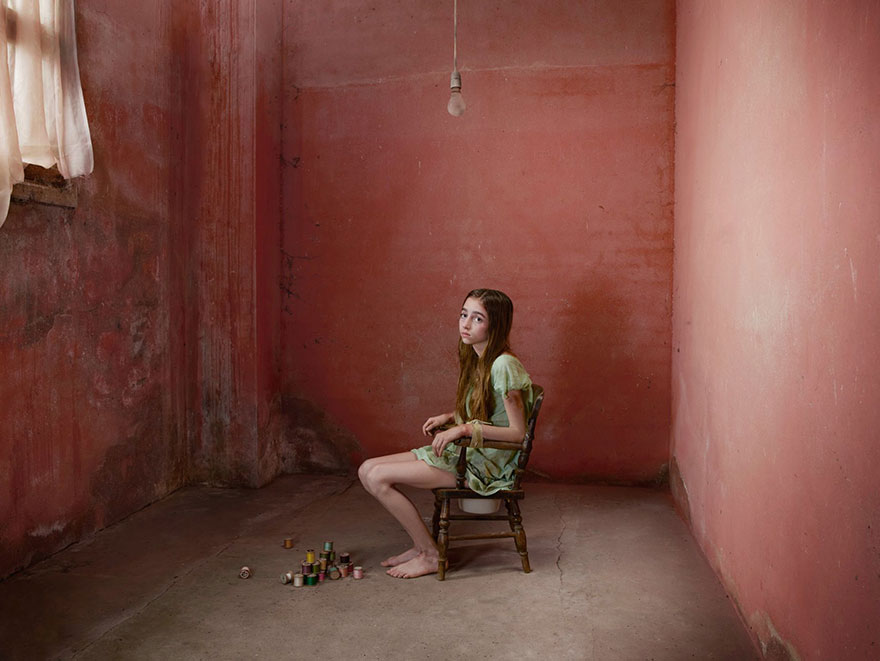
When she was a toddler Genie’s father decided she was “retarded” and restrained her in a child’s toilet seat in a small room of the house. She lived in solitary confinement for more than 10 years. She even slept in the chair. She was 13 years old in 1970 when she and her mother turned up at child services and a social worker noticed her condition. It was later found she also had an older brother that lived in the house and was too severely abused by their father.
She was still not toilet trained and moved with a strange sideways “bunny-walk.” She couldn’t speak or make any sound and constantly spat and clawed herself. For years she became a research object. She gradually learned to speak a few words but couldn’t arrange them grammatically. She also began to read simple texts and developed a limited form of social behaviour. At one stage, she briefly lived again with her mother but was then again passed through various foster homes for years experiencing abuse and harassment. She returned to a children’s hospital where it was found that she had regressed back to silence. Funding for Genie’s treatment and research was stopped in 1974 and it wasn’t known what happened to her until a private investigator located her in a private facility for mentally underdeveloped adults. She is reportedly over 60 and still alive.
Her story is controversial for many reasons but the feud that happened within the scientific community that studied her case is what struck me the most. I found accounts of a few scientists who took care of her but would not be allowed to keep in touch with her.
The Leopard Boy
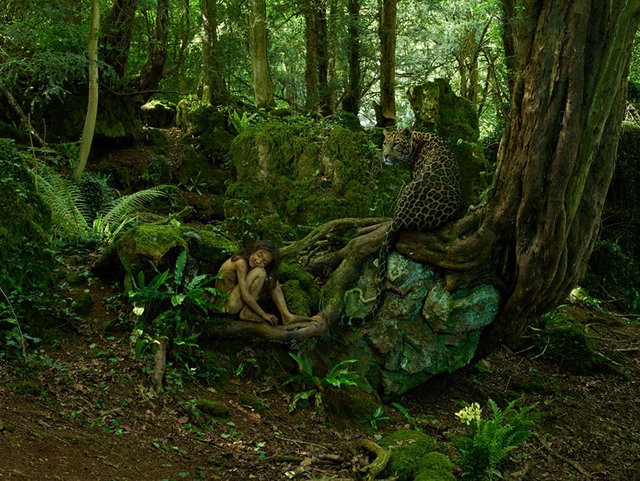
When this Indian boy was only two years old, he was taken by a leopardess in 1912 while his mother worked in the fields, after local villagers killed the leopardess' cubs. Three years later, when the boy was five years old, he was rescued after the mother leopard was killed by hunters, and returned to his parents in the village. The story relates that this boy, when rescued, could run on all fours with exceptional dexterity and speed, his feet stood upright. Additionally, he has developed an acute sense of smell, and even ripped apart and devoured any fowl he could find. E.C. Stuart Baker, a British ornithologist and police officer, visited the boy and wrote a report about him in a Bombay Natural History Society (BNHS) journal as well.
Sujit Kumar the Chicken Boy
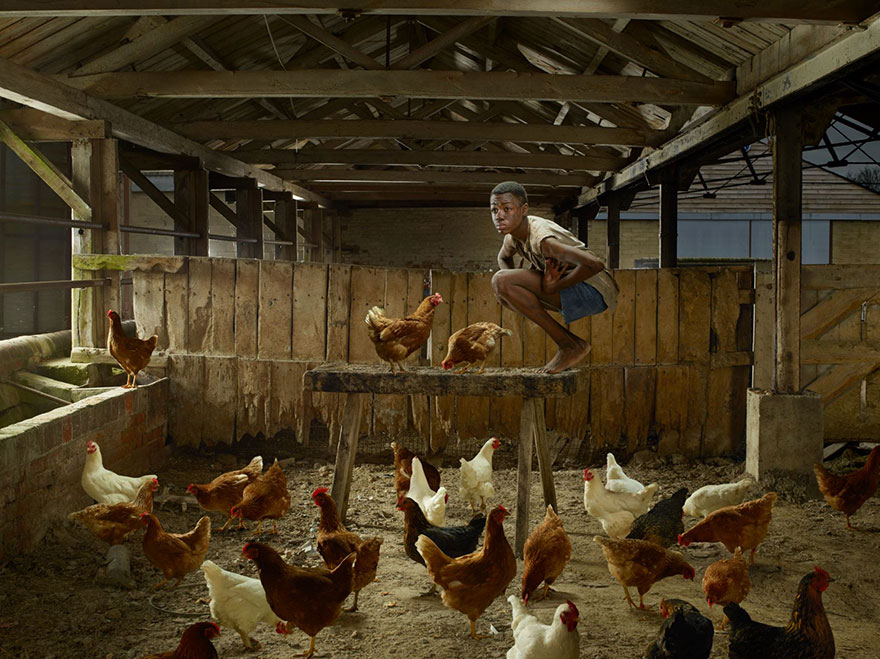
Sujit, a boy from Fiji, exhibited dysfunctional behaviour as a child so his parents locked him in a chicken coop unable to cope with his behaviour. After his mother committed suicide and his father was murdered, his grandfather took responsibility for him but still kept him confined in the chicken coop. He was eight years old in 1978. when he was found in the middle of a road, clucking and flapping. He pecked at his food, crouched on a chair as if roosting, and would make rapid clicking noises with his tongue. His fingers were turned inward. He was taken to an old people’s home by care workers, but there, because he was so aggressive, he was tied with bed sheets to his bed for over 20 years. Now he is over 30 years old and is cared for by Elizabeth Clayton, who rescued him from the home and is working on rehabilitating him.
Kamala and Amala the Wolf Sisters

Kamala was eight years old, and Amala was aged one and a half when they were allegedly found in a wolf's den in 1920 by a Reverend Joseph Amrito Lal Singh. The Reverend was said to have hidden in a tree near the cave where these girls had been spotted previously, and when the wolves left the cave, he saw the two figures emerge from within. The girls looked hideous, and far from human as they ran on all fours. Soon, he captured the girls and rescued them, but as he brought them to civilization to live in his orphanage, they didn't adapt well to their new circumstances. They growled, tore off their clothing, and ate nothing but raw meat. The tendons and joints in their arms and legs were shortened, leaving them physically deformed, and they had calloused palms and knees with sharp-edged teeth. While their sense of sight, hearing and smell were exceptional, they had no interest in human interactions, and as Singh tried to help them engage with other children, their animalistic behaviour prevented any such success. Amala died the year following their capture, while Kamala learned to walk upright and even speak a little, only to die of kidney failure in 1929 when she was 17 years old.
There is a dramatic twist to this story: A French surgeon Serge Arole researched the case of Kamala and Amala, and he found the entire story to be scandalously false, and his book L'Enigme des enfants-loup (Enigma of the Wolf-Children), 2007 described how, after going through each detail, he concluded that most of Singh's claims were a lie. According to the orphanage's medical doctors, the girls had none of the anomalies that Singh invented but seemed to have neurodevelopmental disorders. Professor Robert M. Zingg of the University of Denver, after a series of letter exchanges with Singh, co-authored a book with the Reverend called Wolf-Children and Feral Man, which received such great criticism from anthropologists that Dr. Zingg was dismissed from his academic post and never taught again.
Ivan Mishukov the Dog Pack Leader
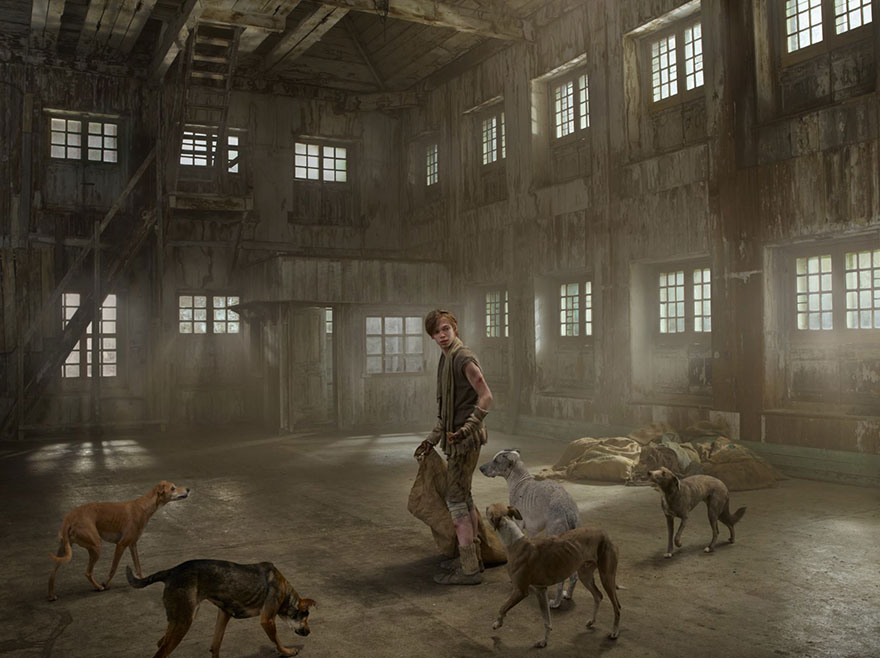
Ivan was abused by his family and ran away when only 4 years old. He lived on the streets begging. He developed a relationship with a pack of stray dogs and shared the food he begged with the dogs. The dogs grew to trust him and eventually he became kind of a pack leader. For two years he lived on the streets of Moscow in this way. He was finally caught and placed in a children’s home even though it took the police a few tries because the dog pack would come and rescue him. Apart from having fleas and lice, Ivan was in surprisingly good health when he was brought in; a testament to the great care his canine family provided. The two years in the pack also didn’t affect his speech too much, which meant that Ivan was easily reintroduced into society. Unfortunately, Ivan’s mother had passed away three months prior to his rescue, which led to him spending some time at the Reutov children’s centre in Moscow. He was placed with a loving family and went on to graduate from military school.
Today , Ivan is a well-adjusted member of society and has appeared on Russian and Ukrainian television to recount the time with his pack. His story is a moving example of the powerful bond that man and dogs share, and just goes to show that sometimes the most loving family members come with fur and four legs. There is even a play produced after the tale of the Dog Boy .
Marie Angelique Memmie Le Blanc the Wild Girl of Champagne
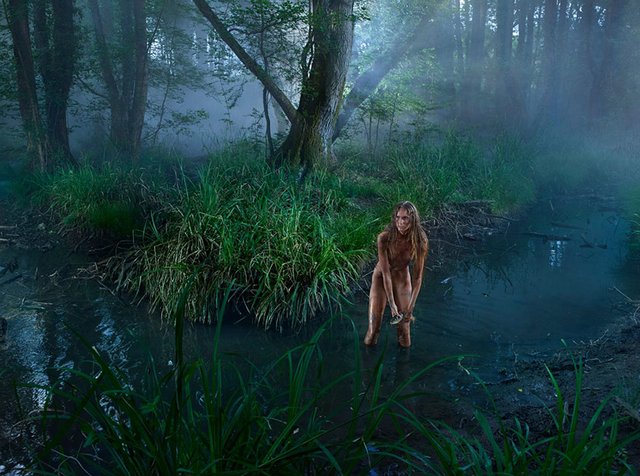
The story of the Wild Girl of Champagne from the 18th century is surprisingly well-documented. For ten years, she walked thousands of miles alone through the forests of France. She ate birds, frogs and fish, leaves, branches and roots. Armed with a club, she fought off wild animals, especially wolves. She was captured, aged 19, black-skinned, hairy and with claws. When Memmie knelt down to drink water she made repeated sideways glances, the result of being in a state of constant alertness. She couldn’t speak and communicate only with shrieks and squeaks. She skinned rabbits and birds and ate them raw. For years she did not eat cooked food. Her thumbs were malformed as she used them to dig out roots and swing from tree to tree like a monkey. It was speculated she was Native American and came to Europe as a servant when she was about nine and ran away from her masters. In 1737, the Queen of Poland, mother to the French queen, and on a journey to France, took Memmie hunting with her, where she still ran fast enough to catch and kill rabbits. Memmie’s recovery from her decade-long experiences in the wild was remarkable. She had a series of rich patrons, learned to read, write and speak French fluently. In 1747. she became a nun for a while but was hit by a falling window and her patron died soon thereafter. She became ill and destitute but again found a rich patron. In 1755. a Madam Hecquet published her biography. Memmie died financially well-off rich in Paris in 1775., aged 63.
John Ssebunya the Monkey Boy
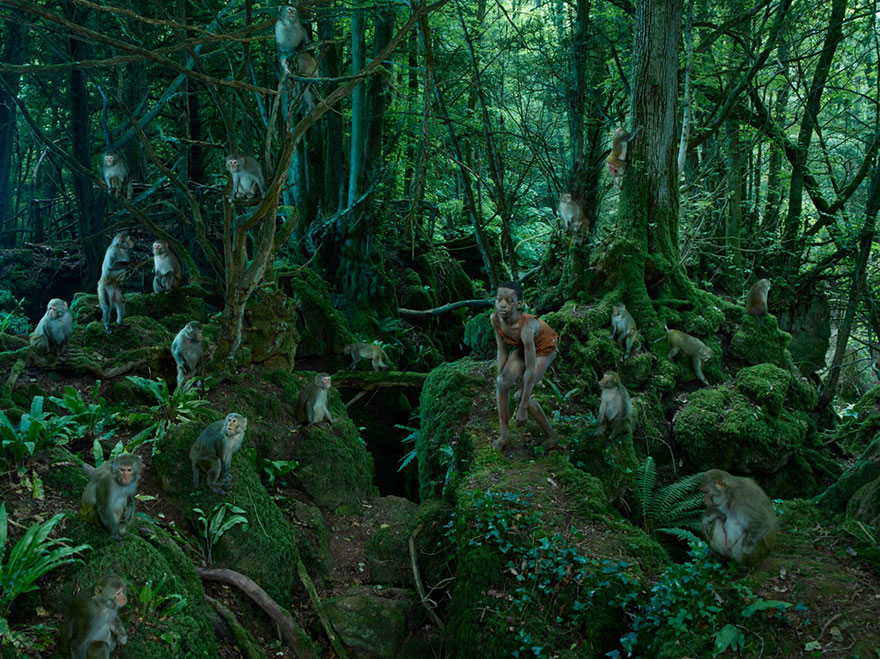
John ran away from home in 1988. when he was three years old after seeing his father murder his mother. He fled into the jungle where he lived with monkeys. He was captured in 1991., when he was about six years old, and placed in an orphanage. When he was cleaned up it was found that his entire body was covered in hair. His diet had consisted mainly of roots, nuts, sweet potatoes and cassava and he had developed a severe case of intestinal worms, found to be over half a metre long. He had calluses on his knees from walking like a monkey. Slowly John has learned to speak and human ways. He was later found to have a fine singing voice and is famous for singing and touring in the UK with the 20-strong Pearl of Africa children’s choir. I couldn't find any videos of him singing but I found this interesting interview with him conducted in 1999.
Victor the Wild Boy of Aveyron
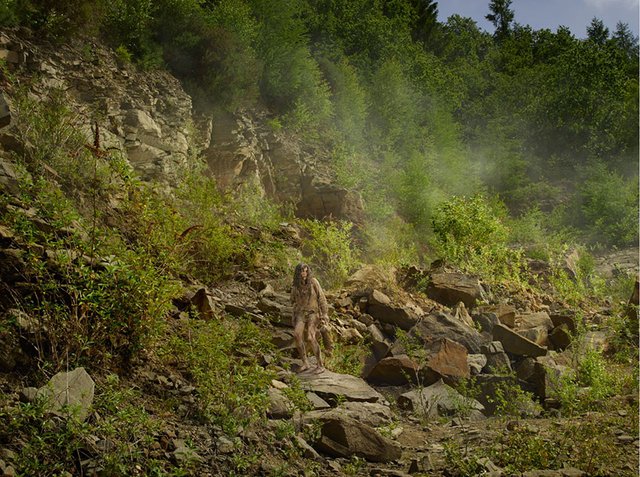
This is a historical but surprisingly well-documented case of a feral child, as he was very much research at the time to attempt to find the derivation of language. Victor was seen at the end of the 18th century in the woods of Saint Sernin sur Rance, in the south of France and captured but somehow escaped. On January 8, 1800. he was caught again. He was about 12 years old, his body covered in scars and unable to speak a word. Once the news of his capture spread, many came forward wanting to examine him.Little is known about the background of his time as a feral child, but it is believed that he spent 7 years in the wild. A biology professor examined Victor’s resistance to cold by sending him naked outside in the snow. Victor showed no effect of the cold temperature on him whatsoever.Others tried to teach him to speak and behave ‘normally’, but made no progress. He was probably able to talk and hear earlier in his life, but he was never able to do so after returning from the wild. Eventually, he was taken to an institution in Paris and died at the age of 40.

About the photographer
Julia Fullerton-Batten is a worldwide acclaimed and exhibited fine-art photographer. Her body of work now encompasses twelve major projects spanning a decade of engagement in the field.
The foundation of her success was 'Teenage Stories' (2005), an evocative narrative of the transition of a teenage girl to womanhood. This and sequel projects portray the difficult stages and life situations of an adolescent girl's transition to womanhood as she grapples with the vulnerability of her teenage predicament – adjustments to a new body, her emotional development and changes in her social standing. Julia’s book ‘Teenage Stories’ was published in 2007*.
Her more recent projects consider social issues, frequently covering the controversial subject matter. For example, this one I used photos from 'Feral Children, 2015’. Here she re-enacts fifteen reported historical cases of feral children. Using child actors, her re-enactments illustrate the tragic circumstances in which children were rejected or abused by their parents, got lost or were left in the wild, and yet others were captured by wild animals.
Fullerton-Batten was born in Bremen, Germany. Her early life was spent in Germany and the USA, but after her parent’s divorce, she and her siblings moved to the UK. There she completed her secondary education, then studied photography at college. Subsequently, she assisted professional photographers for five years before a first commercial assignment kick-started her career in 1995, and first gained recognition as a fine-art photographer in2005.
Fullerton-Batten has won countless awards for both her commercial and fine-art work and is a Hasselblad Master. She was commissioned by The National Portrait Gallery in London to shoot portraits of leading people in the UK National Health Service. These are now held there in a permanent collection. Other images are also in the permanent collection at the Musee de l'Elysee, Lausanne, Switzerland. If you are lucky enough to be in these places you can see her work in the next few months she has exhibitions in San Francisco, Istanbul, London and Basel.
Read more about Julia and her work here: https://www.juliafullerton-batten.com


his brother tarzan is known for the wolf woman....................................
Downvoting a post can decrease pending rewards and make it less visible. Common reasons:
Submit